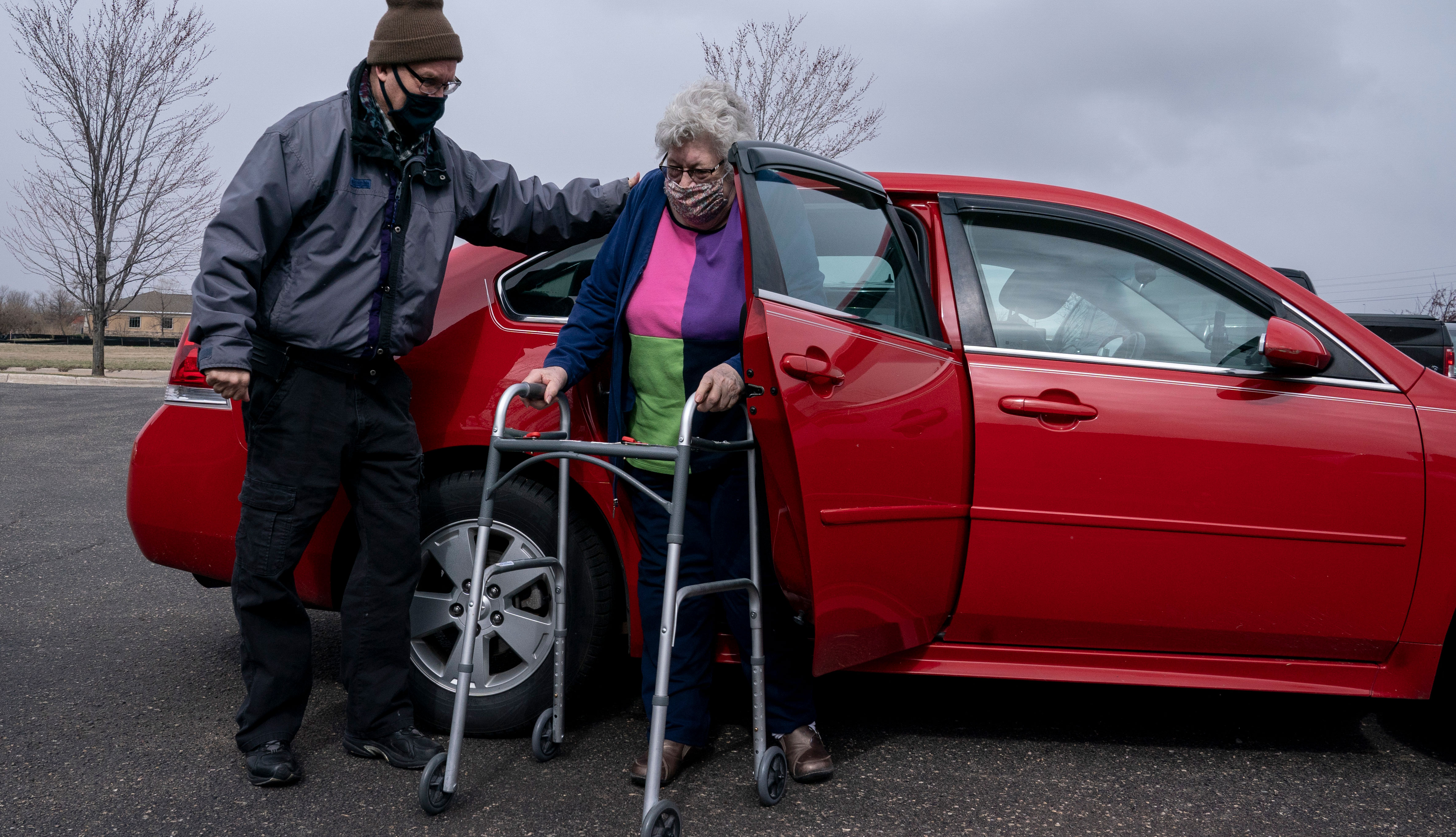AARP Hearing Center

Florence Brosh, 86, of Alexandria, puts her car in storage for the winter, making it tough to get to medical appointments.
“I was begging my kids,” she said. “I always tried to make my appointments on Tuesdays because I have a granddaughter who’s a hospice nurse and she has Tuesdays off.”
But since she signed up for Age-Friendly Alexandria’s Ready Ride service in February, seeing her dentist and doctor has been as easy as waiting at her door.
“They know when I need to go,” said the retired printing press worker. “They help me to the door if I need help.”
The focus on older residents, including services that help people stay in their homes as they age, is why Alexandria joined AARP’s Network of Age-Friendly States and Communities in 2016 and Gov. Tim Walz (D) created the Governor’s Council on an Age-Friendly Minnesota in 2019. The group is to submit its final recommendations this year.
Meanwhile, AARP Minnesota is continuing to support communities and work with state legislators to set up a permanent age-friendly council that will enable more change across the state through engagement with at least nine state agencies, the business community and other groups.
“In Minnesota, for the first time ever in 2020, our 65-plus population grew larger than the population of school-age children,” said Will Phillips, state director for AARP Minnesota. “We need to think about the needs of older adults. If you do that, you’ll create better communities for the old, the young and everybody in between.”
In Alexandria that translated to supplementing the existing bus system with transportation that goes outside of city limits to pick up people for appointments in town. Riders, many of whom don’t drive or own a car anymore, love it, said Dian Lopez, Age-Friendly Alexandria cochair.
Internet access is key
Alexandria is one of seven Minnesota cities and two counties in AARP’s age-friendly network. Minneapolis joined in 2015.
Christina Kendrick, a Minneapolis community engagement specialist, said the city has three living-well-at-home programs. It works with a community service provider that offers home help for family caregivers for free or at a reduced cost.
“They provide a whole host of services, from health and wellness to social activities to health screening and lifelong learning,” she said. “They’ll provide rides when necessary, and during COVID they’re delivering groceries, picking up prescriptions and doing phone check-ins.”
Sherrie Pugh, chair of the Governor’s Council on an Age- Friendly Minnesota, said the group has focused on a range of issues, including improved transportation in rural areas and access to high-speed internet.
“Broadband is like the new electricity,” Pugh said. “It needs to be affordable.”
The technology has come in handy in Alexandria. Before the COVID-19 crisis, Lopez and other volunteers at the Central Minnesota Elder Network spent time with isolated older people.
“I’d play card games; I’d go for walks with them,” Lopez said.
High-speed internet access, along with iPads funded by a grant, has allowed some of the network’s initiative to continue during the pandemic.
“It’s been really good,” she said.
Learn about age-friendly communities at aarp.org/livable.
Mary Van Beusekom is a writer living in Excelsior.
More on Livable Communities































































